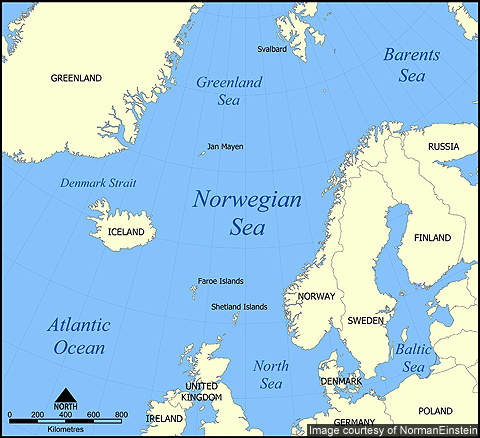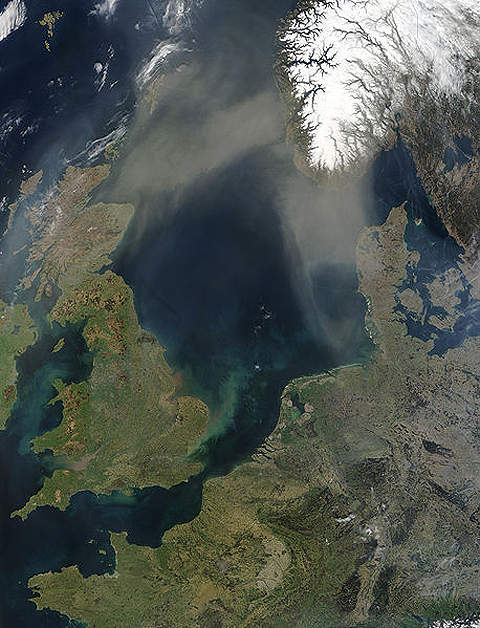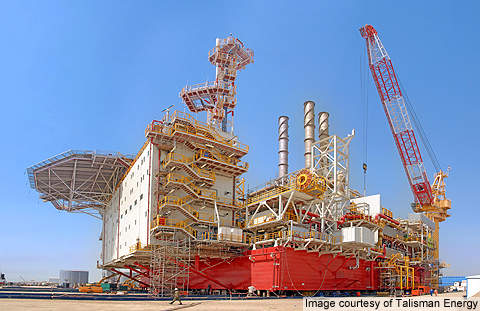The Yme field is located in the Egersund Basin, 100km off the coast of Norway. It lies at a water depth of 93m in blocks 9 / 2 and 9 / 5 in the south-eastern region of the North Sea. Yme is one of the smallest fields developed in Norway with independent production facilities.
The field was originally discovered by Statoil in 1986, but was abandoned in 2001. Repsol (formerly known as Talisman Energy Norge), which holds a 40% interest in the field, is carrying out a redevelopment programme and is also the operator.
The remaining interest in the field is held by Lotos Exploration and Production (20%), Bridge Energy (20%), OKEA (10%) and Norske AEDC (10%).
Repsol expects to recover about 60 million barrels of crude from the field over the next ten years. The maximum production of the Yme field is estimated to be 40,000bopd. Talisman has invested more than $629.5m in developing the field and plans to invest another $800m.
The first oil from the Yme field was expected in January 2009, but was delayed due to load and brake faults discovered in the Maersk Giant jack-up drilling rig.
The Norwegian Petroleum Safety Authority (PSA) issued several warnings and injunctions over the installation aspects of the rig, which caused the delay.
In March 2010, Talisman finished the drilling of a dry well 9/2-11 approximately 10km from the Yme field. The well was drilled to establish the presence of petroleum in the field.
Drilled to a depth of 2,810m, the well found reservoir rocks with good reservoir quality.
Talisman drilled the well using the Transocean Winner semi-submersible drilling unit. The dry well is planned to be permanently plugged and abandoned.
In February 2011, AOC Holdings announced that production start from the field would be further delayed to the second half of 2011. The delay was attributed to bad weather conditions in the North Sea. AOC holds a 10% interest in the field through Norske AEDC.
In August 2016, the mobile offshore production unit (MOPU) was removed by Allseas’ Pioneering Spirit vessel, delaying the production from the Yme oil field for an unspecified period of time.
Yme field geology
The Yme field comprises two main structures, Gamma and Beta, located 12km apart. Oil in these reservoirs was accumulated in sandstones from the Middle Jurassic era in the Sandnes Formation. The sandstones are located at a depth of approximately 3,150m and are well consolidated. The Sandnes Formation features a homogeneous tight lower arrangement and a heterogeneous upper arrangement.
MOPUstor jack-up platform
Tepsol plans to develop the Yme field using the MOPUstor jack-up platform. MOPUstor is a mobile offshore production unit featuring a subsea storage tank.
SBM Offshore, a subsidiary of GustoMSC, completed the construction of the platform in May 2010. The platform was sent to Norway where its legs were installed at an inshore location in the field. Following this, offshore installation of the platform was carried out.
MOPUstor was placed over the Gamma reservoir of the Yme field. The Gamma wells were supposed to be surface connected to the platform, while those from the Beta reservoir were to be connected to the platform through tie-ins.
The platform was abandoned in July 2012 when cracks were found in the cement grouting on the legs of the platform.
Maersk Giant rig
Drilling activities on the Yme field are planned to be carried out using Maersk Giant’s jack-up drilling rig. The rig was originally designed and built by Hitachi Zosen Giant Class in Japan and is owned by Maersk Contractors. It was used during the original drilling operations carried out by Statoil.
The rig can operate at a water depth of 350ft, while its drilling depth is 25,000ft.
In October 2008, Talisman received approval from the PSA to use Maersk Giant for the drilling activities of the field. Maersk Giant is expected to drill 12 production and injection wells for the Yme field.
Yme field development
Following Yme field’s discovery in 1986, Statoil used the Maersk Giant rig to drill four wells in the Gamma reservoir and another four in the Beta. Oil production from the field started in February 1996 and continued until 2001.
Statoil recovered about 50 million barrels of oil from the field during this period. In 2001, due to low oil prices, Statoil found that it was not feasible to continue activities at the field. The company had extracted only 20% of the estimated reserves contained in the field.
In 2006, Talisman decided to extract the remaining reserves in the field. The company presented a plan for development and operation (PDO) of the field to Norway’s Ministry of Petroleum and Energy in January 2007. The PDO was approved in May that year.
Oil will be produced using water injection as the drive mechanism. Excess gas may be injected into one well to improve oil recovery. The Yme field features low reservoir pressure necessitating artificial lift to increase production initially. An artificial lift will also be required to lift the wells after water breakthrough.
Oil export
The oil from the subsea storage tank of the MOPUstor platform will be exported to tankers through a submerged loading system (SLS). The SLS will be connected to export tankers via a 16in ID riser in a steep wave configuration. It will be operated with DP Class 2 tankers, therefore removing the need for mooring.
Contractors involved with the Yme oilfield development
In September 2009, Odim was awarded a $25.2m contract to develop and construct a workover jack-up rig for the Yme field. The rig will be used for servicing and replacing submerged pumps. Odim is expected to deliver the rig in June 2011.
In June 2007, Technip was awarded a $155m-worth contract for the redevelopment programme. The scope of work under the contract includes the installation of rigid flowlines, umbilicals, tie-ins, spools and a manifold. The contract also covered trenching, rock dumping and pre-commissioning work on the field. Technip’s pipelay vessel, the Apache, will be used to install the flowlines.
In January 2007, SBM Offshore was awarded a contract for the design, development and construction of the MOPUstor jack-up platform. SBM was also awarded a FEED contract in September 2006.
Koso Kent Introl fabricated and supplied a titanium choke valve for the platform. The first of its kind titanium choke valve was specially designed for the field.
SBM subcontracted Adyard under a $35m contract to fabricate and install the hull, topsides and other facilities of the platform at its Abu Dhabi facility.
In March 2011, FoundOcean was subcontracted by SBM to carry out grouting works for the installation of the platform.
STEP Offshore supplied a fluid and well control system to Rolls-Royce Marine in March 2011, for use at the field.










